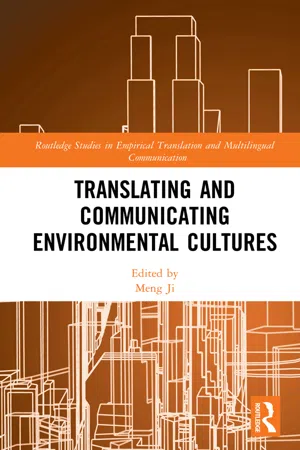1.1 Introduction
In today’s world, machine translation (MT) and computer-assisted translation (CAT) are a consolidated part of the professional translation workflow. Nevertheless, terminology management is still considered complex and time-consuming and often is not seamlessly integrated into the translation process. Furthermore, most terminological tools do not take into account the real search behaviour of end users such as translators (Tudhope et al., 2006; Durán Muñoz, 2012: 78) and most terminological modules in CAT tools do not go beyond a simple glossary of source and target terms. Apart from that, access to corpora is generally not provided in most CAT tools, despite the valuable phraseological information that a corpus can provide. An exception to this is the recently added Sketch Engine plug-in (available from the SDL AppStore) in SDL Trados Studio but, generally speaking, loss of translation quality and precious time are the inevitable consequences.
An excellent example of how to improve on the current situation is the initiative carried out by the TaaS project.1 TaaS (Terminology as a Service) is a European project developed by a group of institutions and companies in the translation technology field who conceive 21st-century terminology in a user-friendly, collaborative, cloud-based environment (Gornostay, 2014). Their aim is to create a platform for instant access to the most up-to-date terms and for user participation in the acquisition, sharing, and reuse of multilingual terminological data. TaaS targets all types of language professionals but specifically focuses on translators as end users, as it provides the following terminology services: (1) automatic extraction of term candidates; (2) automatic recognition of translation equivalents in different public and industry terminology databases; (3) automatic acquisition of translation equivalents for terms not found in term banks from parallel/comparable web data using state-of-the-art terminology extraction and alignment methods; (4) facilities for terminology sharing and reusing within CAT tools; and (5) improvement of statistical machine translation systems through terminological data integration.
In this line, we developed EcoLexiCAT, a terminology-enhanced CAT tool that provides easy access to domain-specific terminological knowledge in context (León-Araúz, Reimerink, & Faber, 2017; León-Araúz & Reimerink, 2018). EcoLexiCAT is freely available2 for any user interested in translating English or Spanish environmental texts. This application integrates all features of the professional translation workflow in a stand-alone interface where a source text is interactively enriched with terminological information (i.e. definitions, translations, images, compound terms, corpus access, etc.) from different external resources: (1) EcoLexicon, a multimodal and multilingual terminological knowledge base on the environment (Faber et al., 2014; Faber et al., 2016); (2) BabelNet, an automatically constructed multilingual encyclopedic dictionary and semantic network (Navigli & Ponzetto, 2012); (3) the EcoLexicon English Corpus (EEC), powered by Sketch Engine, the well-known corpus query system (Kilgarriff et al., 2004); (4) the Inter-Active Terminology for Europe (IATE), the multilingual glossary of the EU; and (5) other external resources that can be customised by users (i.e. Wikipedia, Wordreference, Linguee, etc.).
The remainder of this chapter is organised as follows: Section 1.2 explains terminology management from the perspective of the needs and expectations of professional translators. Section 1.3 concisely describes the web-based open-source CAT Tool MateCat on which EcoLexiCAT is based, as well as the external resources used for terminology enhancement. Section 1.4 provides a detailed explanation of EcoLexiCAT and its different modules. Section 1.5 explains the procedure with which EcoLexiCAT was tested and evaluated, and discusses the results regarding users’ expectations, behaviour, performance, and satisfaction. Finally, Section 1.6 presents the conclusions that can be derived from this study and outlines ideas for future research.
1.2 Translators’ needs and expectations for terminology management
Any lexicographic or terminographic tool should take into account the needs of end users, in its structure and content as well as the way that the information is represented so that users can search and interact with the tool (Tarp, 2013). When translators query a resource and do not find the information needed, they lose time and their productivity goes down (search costs; Nielsen, 2008). Similarly, when translators obtain too much data (infoxication; Cornellà, 1999), which lengthens the knowledge construction time, comprehension costs (Nielsen, 2008) go up. In addition, translators do research in all phases of the translation process. Firstly during the pre-translation phase, research is carried out in order to understand the original text and its terminology. When the original message is encoded in the target text, research is performed with a view to fulfilling pragmatic requirements and searching for equivalents. Finally, in the revision phase, translators must check terminology and generally ensure the quality of their translation (Durán Muñoz, 2012: 80). Accordingly, one of the major challenges of lexicographic and terminographic resources for translators is to find the right balance between search costs and comprehension costs.
Durán Muñoz (2010, 2012) affirms that translators prefer to solve their terminological problems by consulting ready-made resources. According to her study, the most frequent resources used are (in this order): bilingual specialised dictionaries or glossaries, searches in search engines, terminological databases, monolingual specialised dictionaries, and Wikipedia (Durán Muñoz, 2012: 81). She mentions that translators do not trust the quality of multilingual resources and that searches in parallel corpora are not high on the list of preferences. When asked to classify the most frequent ISO fields (ISO 12620:1999) in the microstructure of terminological resources, translators considered the following ones to be most essential: clear and concrete definitions, equivalents, derivatives and compounds, domain specification, examples, phraseological information, definition in both languages for bilingual resources, and abbreviations and acronyms (Durán Muñoz, 2012: 82). Finally, when asked for their opin...
